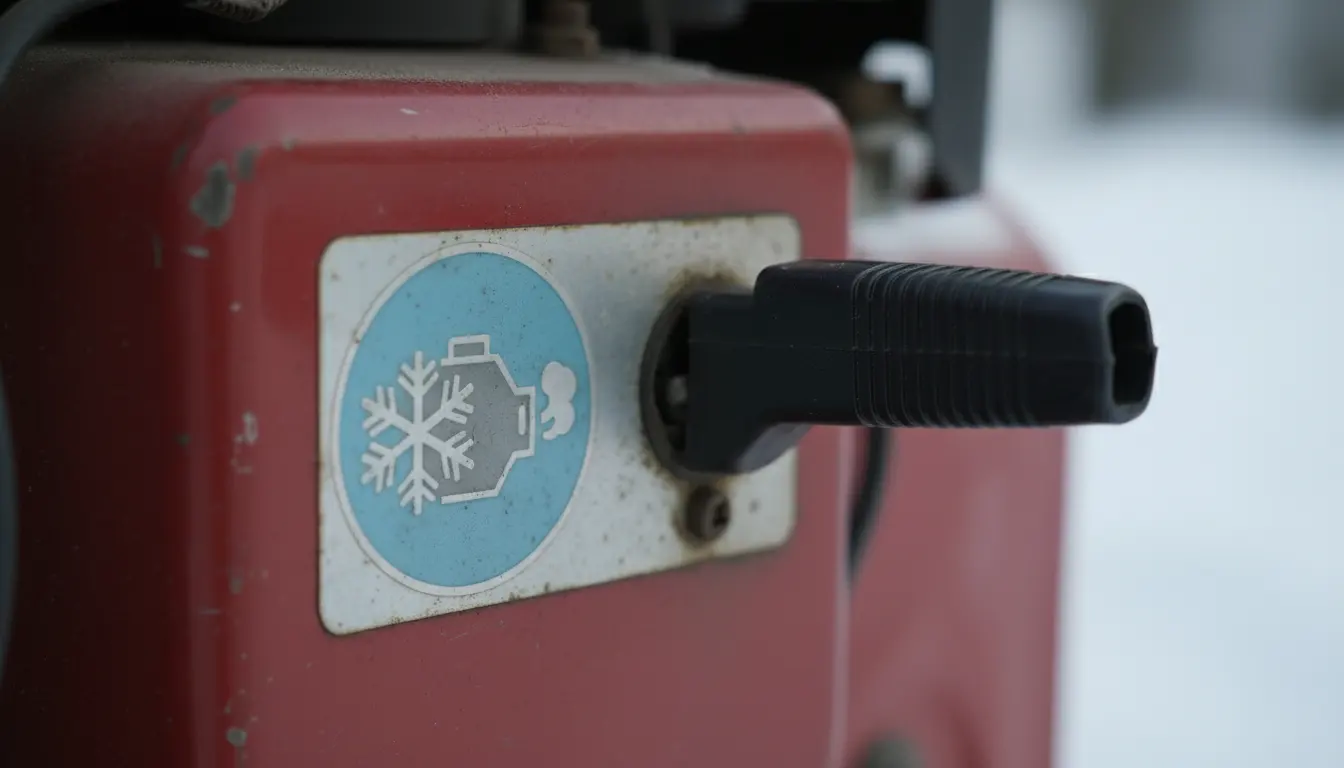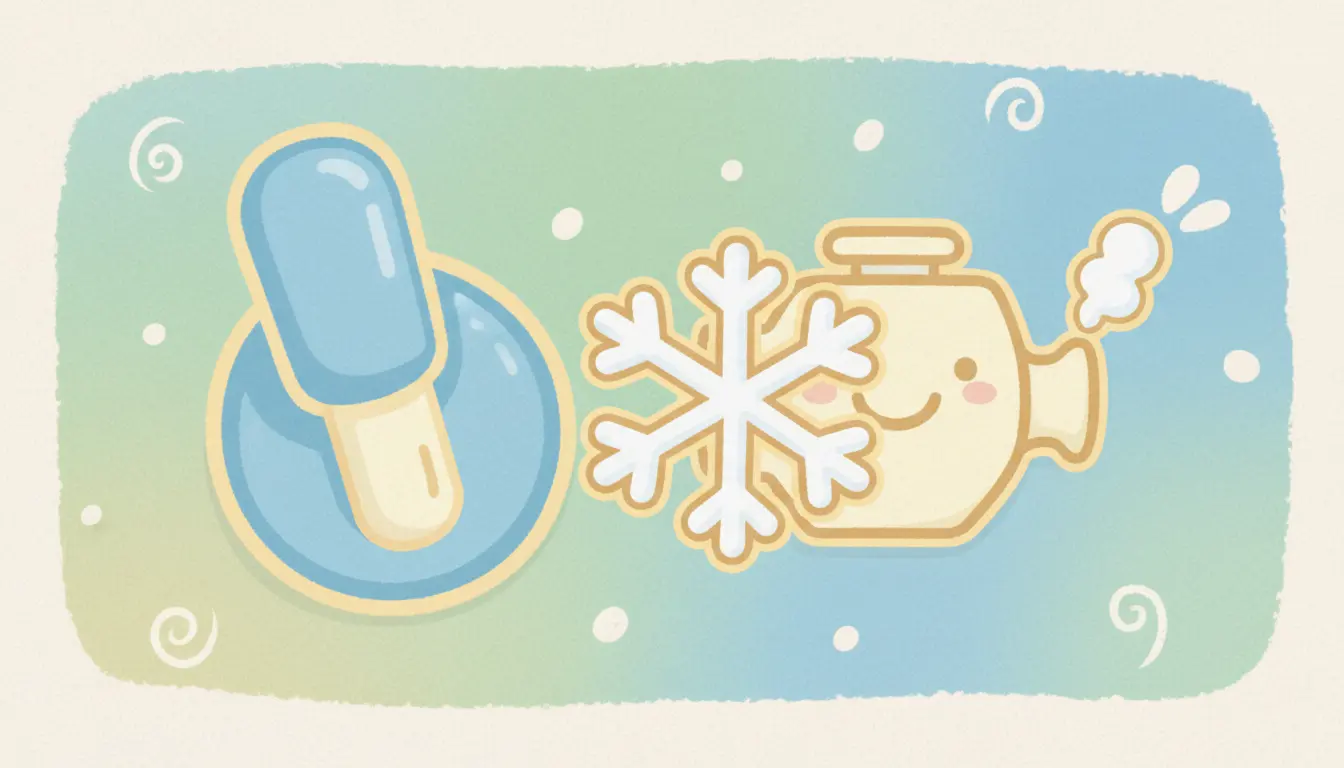The Snowblower Choke Symbol Explained: Unlock Easy Starts Now!
You’re staring at a foot of fresh snow, ready to fire up your trusty snowblower, but a confusing symbol on the control panel stops you in your tracks. It’s the choke symbol, a small but critical icon that holds the key to a quick, frustration-free start. Misunderstanding this simple control is a common problem that leads to flooded engines, endless cord pulling, and wasted time on a cold morning.
This guide will demystify the snowblower choke symbol once and for all. We’ll explore what it means, why it’s essential for a cold engine, and provide a step-by-step process for using it correctly every time. Say goodbye to starting struggles and hello to a perfectly cleared driveway.
You'll Learn About
What Is a Snowblower Choke and Why Does It Matter?
At its core, a snowblower’s choke is a simple mechanism inside the carburetor that regulates the air-to-fuel ratio. When an engine is cold, gasoline doesn’t vaporize as easily. To compensate, the engine needs a “richer” fuel mixture—more fuel and less air—to ignite and start properly.
Engaging the choke closes a plate in the carburetor, restricting airflow and forcing a higher concentration of fuel into the engine’s combustion chamber. Once the engine warms up, it no longer needs this rich mixture. Disengaging the choke opens the plate, restoring the optimal air-to-fuel balance for efficient operation.
Decoding the Snowblower Choke Symbol: What Do They Look Like?
The biggest source of confusion for many users is the symbol itself, as there isn’t a single universal icon. However, most manufacturers use symbols that depict a flat plate or line representing the choke plate inside the carburetor. Understanding the two primary positions is key.
Proper garage maintenance is crucial for keeping your equipment in top shape. Ensuring your workspace is well-lit and safe can make all the difference, which is why fixing an always-on light switch should be a priority for clear visibility during repairs.
The “Open” vs. “Closed” Choke Symbols
Full Choke (Closed Position): This is the setting you need to start a cold engine. The symbol for a full or closed choke typically shows a vertical line with a horizontal or slanted line through it, indicating the airflow is blocked. Some levers will simply have text that says “Choke,” “Start,” or “Full.”
No Choke (Open Position): This is the “Run” position, used once the engine is warm. The symbol for an open choke usually shows the line in a vertical or open position, indicating that air can flow freely. The lever may also point to text that says “Run” or “Off.”

Universal Icons and Brand-Specific Variations
While the open and closed plate concept is common, symbols can vary. Some snowblowers use a simple lever that points to “Start” and “Run.” Others might use icons resembling a snowflake for the cold start (full choke) position. When in doubt, always refer to your owner’s manual for the specific symbols used on your model.
How to Use the Snowblower Choke for a Perfect Start Every Time
Using the choke correctly is a simple process that can be broken down into a few easy steps. The procedure differs slightly depending on whether the engine is cold or has been recently running.
Starting a Cold Engine: The Step-by-Step Guide
- Set the Choke to FULL: Before your first pull, move the choke lever to the full or closed position. This is the most critical step for a cold start.
- Engage the Throttle: Move the throttle lever to the “Fast” position, often indicated by a rabbit symbol. Your snowblower should always be started and operated at full throttle.
- Prime the Engine: Press the primer bulb 2-3 times. This small, rubbery button injects a small amount of fuel directly into the carburetor, aiding in ignition.
- Start the Engine: Pull the starter rope firmly or press the electric start button. The engine should fire up within a few attempts.
- Gradually Open the Choke: This is where many people make mistakes. Let the engine run on full choke for about 5-10 seconds until it sounds somewhat stable. Then, slowly move the choke lever halfway toward the “Run” position.
- Move to the “Run” Position: After another 15-30 seconds of warming up at half-choke, move the lever all the way to the “Run” or open position. The engine should now idle smoothly and be ready for work.
Common Mistakes When Using the Snowblower Choke (And How to Avoid Them)
Even with the right knowledge, mistakes can happen. Being aware of common pitfalls can save you from a major headache.
Leaving the Choke On Too Long: Running your snowblower with the choke engaged for an extended period is harmful. It leads to excessive fuel consumption, black smoke from the exhaust, and can foul the spark plug with carbon deposits.
Forgetting to Use the Choke on a Cold Start: If you try to start a cold engine without the choke, you’ll be pulling the starter cord endlessly. The engine simply isn’t getting the rich fuel mixture it needs to ignite in cold weather.
Opening the Choke Too Quickly: If you move the lever from “Full” to “Run” immediately after the engine starts, it will likely sputter and stall. The engine needs a brief warm-up period to run on a leaner fuel mixture.
Troubleshooting Choke-Related Starting Problems
Sometimes, even when you do everything right, your snowblower won’t cooperate. Many common starting issues are directly related to the choke and the fuel system. Understanding your equipment goes beyond just operation; proper storage and maintenance are key. For instance, if you’re planning modifications to your storage space, understanding how to handle walls like drywall with metal backing can be important for mounting shelves securely.
| Problem | Likely Cause | Solution |
|---|---|---|
| Engine won’t start with choke on. | The engine may be flooded (too much fuel). You might smell gas. | Move the choke to the “Run” (open) position to allow more air in. Pull the starter cord several times to clear the excess fuel. Let it sit for 15 minutes before trying again. |
| Engine starts but stalls when choke is turned off. | The carburetor’s main jet is likely clogged with old fuel deposits. The engine is being starved of fuel and can only run on the rich mixture provided by the choke. | The carburetor needs to be cleaned. This often involves removing the float bowl and cleaning the main jet and emulsion tube with carburetor cleaner and a small wire. |
| Engine runs rough or surges. | The choke is partially on, or the carburetor is partially clogged. | Ensure the choke is fully in the “Run” position. If the problem persists, the carburetor likely needs cleaning. |

Frequently Asked Questions
What does the snowblower choke symbol mean?
The snowblower choke symbol typically represents the choke plate in the carburetor. When the lever is moved to the “choke” or “closed” position, it restricts air intake. This creates a richer fuel-to-air mixture, which is necessary for starting a cold engine.
Why does a snowblower need a choke?
A choke is used to help start a cold engine. By limiting the amount of air entering the carburetor, the choke creates a higher concentration of fuel in the air-fuel mixture. This richer mixture is easier to ignite, especially in cold weather.
When should I use the snowblower choke?
The choke should be engaged (“on” or “full” position) when starting a cold engine. Once the engine has warmed up for a few minutes, the choke should be moved to the “off” or “run” position. If you are restarting a warm engine shortly after it was turned off, you may not need to use the choke.
How do I use the choke to start my snowblower?
To start a cold snowblower, move the choke lever to the “full” or “on” position. After priming the engine and setting the throttle, pull the starter cord or use the electric start. Once the engine starts and runs for a short time, gradually move the choke to the “off” or “run” position for normal operation.
What happens if I leave the choke on while operating the snowblower?
Running a snowblower with the choke on for an extended period can cause problems. It leads to an overly rich fuel mixture, which can result in poor engine performance, black smoke from the exhaust, and fuel diluting the engine oil. This can eventually cause excessive engine wear or seizing.
What should I do if the engine sputters after turning the choke off?
If the engine begins to falter or surge after you move the choke to the “run” position, it means the engine is not yet warm enough to operate without it. In this case, you should move the choke lever back to a half-choke position for a short time until the engine runs smoothly, then move it to the fully “off” position.
Beyond the Symbol: Advanced Choke and Carburetor Insights
The choke is part of a larger fuel system. For peak performance, it’s important to use fresh, stabilized fuel, especially in equipment that sits for long periods. Ethanol in modern gasoline can attract moisture and gum up carburetor components, leading to the issues described above.
Proper off-season storage is critical. Always run the snowblower out of fuel or add a quality fuel stabilizer before storing it for the summer. This prevents the fuel from going stale and clogging the fine passages within the carburetor, ensuring that when you need it next winter, the choke system will function as intended. Speaking of fuel systems, managing home utilities safely is paramount; for instance, knowing do you need a permit to cap a gas line is crucial knowledge for any homeowner undertaking renovations.
By understanding the simple but vital role of the snowblower choke symbol, you can ensure your machine starts reliably every time, allowing you to tackle the winter weather with confidence.
